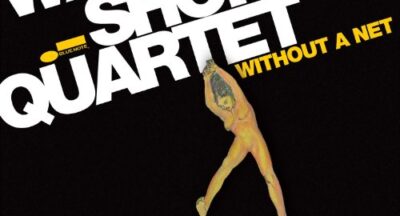
Miles Davis – Adapting Through Time
Miles Davis was born on May 26th, 1926, in Alton, Illinois. He would go on to become one of the most celebrated artists of all time through an illustrious career as a trumpet player, jazz musician, composer, and bandleader. Recently on the 88th anniversary of his birth, the street where he used to live in Manhattan’s Upper West Side was renamed ‘Miles Davis Way’.
To honor that, we will look at one of his greatest traits: the ability to understand and adapt to his surroundings through time.
Perhaps similarly to Picasso or Bob Dylan, Miles remained on the edge by changing styles and approaches multiple times, depending on what was happening in the world around him.
He continuously surrounded himself with the brightest young musicians of the time. John Coltrane, Wayne Shorter, Herbie Hancock, Tony Williams, Keith Jarrett, Chick Corea, Jack Dejohnette, Dave Holland, were among those hired at a young age by Miles before going on to become huge names themselves.
Let’s look at a brief summary of the different periods of his career.
Bebop; The early beginnings. (mid 40’s)
At 18 years old, Miles Davis moved to New York City to attend Julliard School of Music and meet his heroes Charlie Parker and Dizzy Gillespie. He soon got to play in Parker’s band.
Becoming A Leader (late 40’s, early 50’s)
Miles was an innate leader and quickly started recording his own albums with the best musicians in town.
https://www.youtube.com/watch?v=gHKnvwoGg0Y
Orchestra (Late 40’s and late 50’s)
He collaborated with the brilliant arranger Gil Evans in an orchestral setting. Together they recorded beautiful albums like Birth of The Cool, Porgy and Bess, Sketches Of Pain and Miles Ahead.
https://www.youtube.com/watch?v=lvcU_v8ruGE
First Quintet (Mid 50’s)
The first quintet was his first great band. It had what many consider to be the greatest rhythm section of all time with Philly Joe Jones (drums), Paul Chambers (bass) and Red Garland (piano). It also had John Coltrane. Miles and Coltrane were very different and created an exciting contrast. (Coltrane comes in at 2:35).
Kind of Blue (Late 50’s)
Coltrane was still in the band but the rhythm section changed. The band got into modal music with very few chords and basically only one scale. This is a live version of “So What”, a tune from , Kind of Blue, one of his most famous albums.
Second Quintet (mid sixties)
At this point Miles had a completely new band with Tony Williams (drums), Ron Carter (bass), Herbie Hancock (piano) and Wayne Shorter (sax). Coltrane and Ornette Coleman were among those playing freer forms of jazz with their own bands. Miles incorporated certain aspects of free jazz with this band. This is also one of the greatest rhythm section of all time.
Electric (70’s)
Miles would not pass the opportunity to play for huge crowds when electric instruments and amplification made it possible. He decided to go electric and play open rock grooves. The album Bitches Brew is from this time. This is at Isle of White festival.
http://youtu.be/GmJwV3Xkl8M
80’s
Miles embraced the decade and got into the vibe of the time. He played several hits including Michael Jackson’s Human Nature.
In 1991, Miles died of health complications at the age of 65. What would Miles be playing today? The question will forever linger.
arielweissberger
Related Posts
Songs For Father’s Day
1.Beautiful boy (John Lennon) This is one of the happiest songs I can think of....
Classic Renditions Of The Star Spangled Banner
Performances of the American national anthem are often surrounded by all sorts of...
Top 10 Albums of 2013
There is a lot of fantastic music out there and it is always tough to leave some...
Playlist from the 1950’s (mostly)
Music accompanies us throughout our lives. It is with us during celebrations and...




